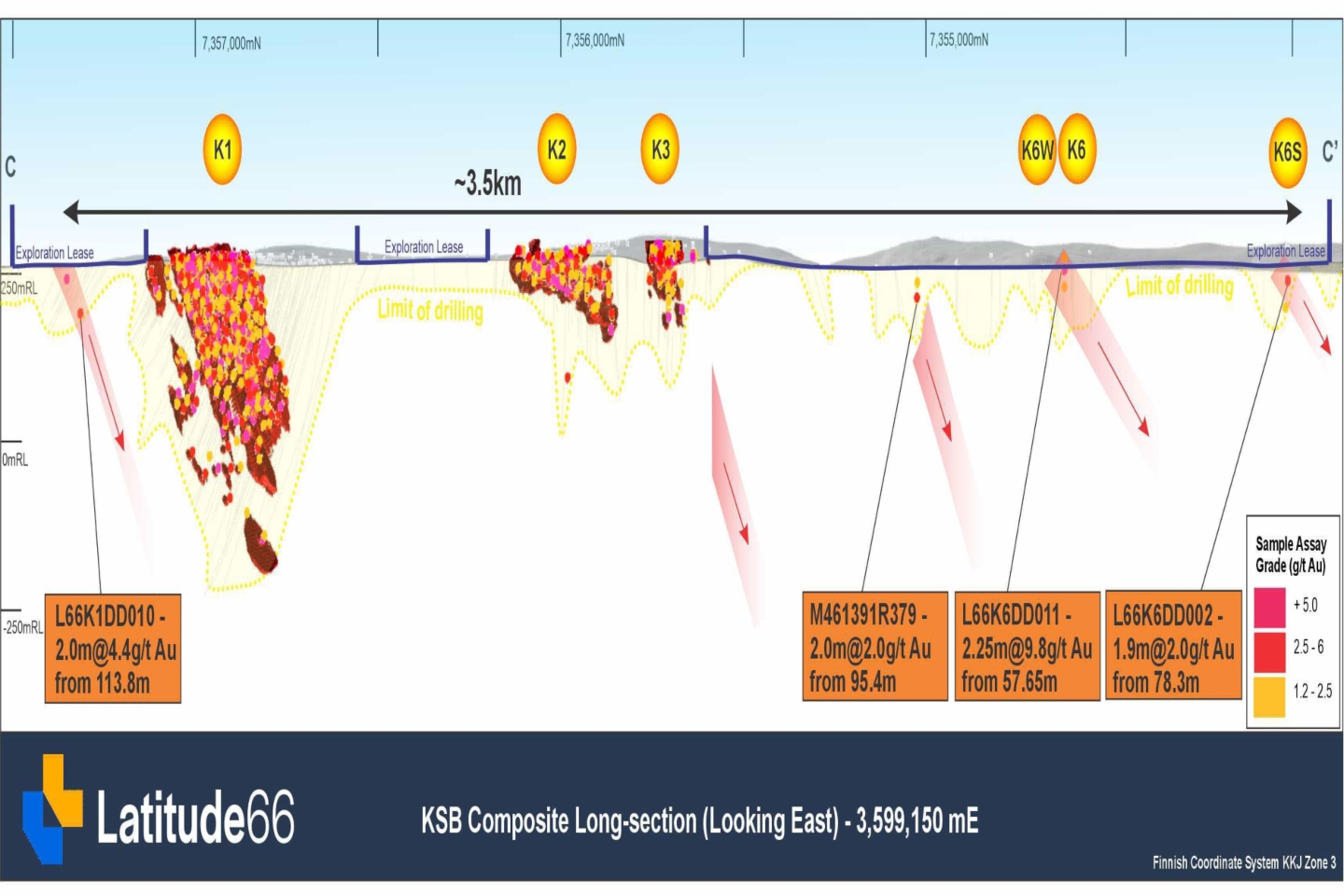Latitude 66 has uncovered a 2.5km gold-cobalt-copper corridor at its K6 prospect in Finland, extending south from its 650,000-ounce K1 gold deposit. A maiden reverse circulation program delivered 12 holes for 315m, hitting broad mineralised zones, including 2m at 0.27g/t gold, 0.13% cobalt and 0.35% copper from 4m. The results suggest K6 may sit on the edge of a much larger system.


Latitude 66 has hit paydirt in northern Finland after a maiden reverse circulation (RC) drilling program at the company’s K6 prospect confirmed a 2.5-kilometre-long corridor brimming with gold, cobalt and copper potential.
The new discovery has unearthed broad zones of anomalous mineralisation running immediately south from its K1 prospect, which contains 650,000 ounces of gold and 5800 tonnes of cobalt. The tenor and distribution of mineralisation appear to form the outer halo of a much bigger mineralised system at depth.
The Perth-based explorer has now completed 12 shallow RC holes for 315 metres at its K6E and K6W prospects. It says the hits have firmed up the underexplored scale of the broader Kuusamo Schist Belt (KSB) project.
Drilling focused on zones defined by discrete induced polarisation (IP) chargeability anomalies coincident with surface boulder samples returning up to 8.8 grams per tonne (g/t) gold and 0.6 per cent copper.
One standout result included 2 metres grading 0.27g/t gold, 0.13 per cent cobalt and 0.35 per cent copper from 4m depth.
A further drill hole hit 4m grading 0.01 per cent cobalt. Management says the result is believed to come from a point where two distinct types of rocks meet - one made of felsic volcanic material and the other containing elevated chromium, magnesium and nickel, suggesting a mafic-style formation.
Although this contact zone showed up in just one of the 12 drill holes, it seems to match a weak but gradually strengthening geophysical signal that dips gently to the east.
Notably, the geophysical signal appears to become more intense at depth. The chargeability peaked at 9 millivolts per volt 100 metres to the east of the contact point in a fold hinge - a structure known to trap high-grade mineralisation elsewhere in the belt.
Latitude believes the same geological forces that formed its nearby K1, K2 and K3 deposits might also be at play at K6. Gold and cobalt in those areas tend to build up along folds and faults in the rock. The company says it will now revisit the geophysics and do more mapping to help pinpoint the core of the mineralised zone.
Latitude 66 managing director Grant Coyle said: “The trial of RC drilling has proven successful on the K6E and K6W prospects at our flagship KSB North project in northern Finland. The results from this program have provided valuable information to understand the characteristics of mineralisation and will guide our future follow-up work on the K6 prospect area nearby to the K1, K2 and K3 deposits.”
Management says the RC drill bit carved through Finnish bedrock at double the speed and half the cost of traditional diamond drilling. Although the exploration technique is not widely used outside of mine development drilling in Finland, it proved its worth at KSB.
Latitude now plans to roll it out as its frontline tool for early exploration, especially in spots already glowing with promising rock chip samples and geophysical hits.
With exploration licences in hand and more than 2.5km of prospective ground yet to be drill-tested, the K6 corridor is shaping up as a major growth engine for the KSB project.
Meanwhile, ongoing discussions with European groups could bring in funding to ramp up Lat66’s RC drill capacity and fast-track its Finnish critical minerals vision.
From unlocking new gold-cobalt systems to redefining exploration, Latitude appears to be blazing a path through Finland’s frozen north – one RC hole at a time.
Is your ASX-listed company doing something interesting? Contact: matt.birney@businessnews.com.au















